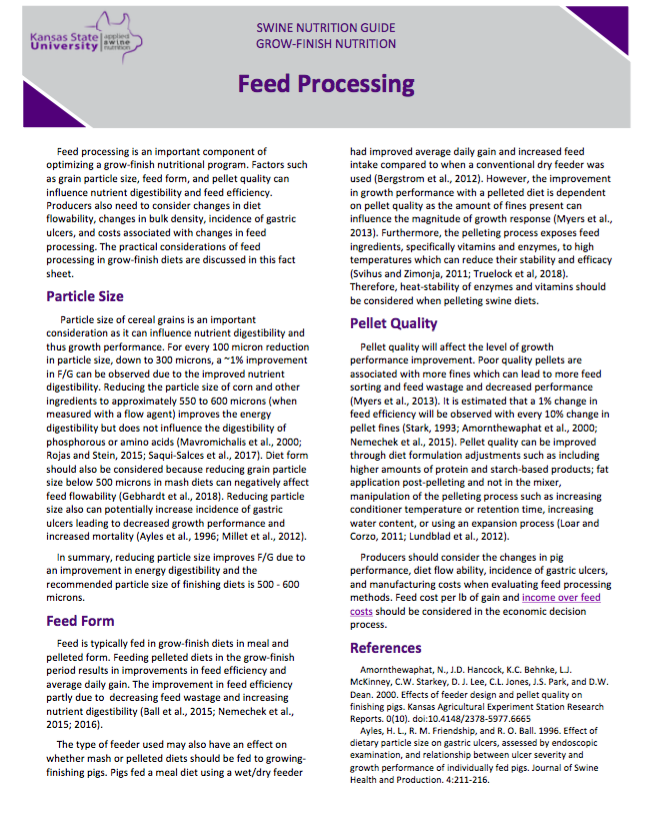Pellet Quality
Pellet quality will affect the level of growth performance improvement. Poor quality pellets are associated with more fines which can lead to more feed sorting and feed wastage and decreased performance (Myers et al., 2013). It is estimated that a 1% change in feed efficiency will be observed with every 10% change in pellet fines (Stark, 1993; Amornthewaphat et al., 2000; Nemechek et al., 2015). Pellet quality can be improved through diet formulation adjustments such as including higher amounts of protein and starch-based products; fat application post-pelleting and not in the mixer, manipulation of the pelleting process such as increasing conditioner temperature or retention time, increasing water content, or using an expansion process (Loar and Corzo, 2011; Lundblad et al., 2012).
Producers should consider the changes in pig performance, diet flow ability, incidence of gastric ulcers, and manufacturing costs when evaluating feed processing methods. Feed cost per lb of gain and income over feed costs should be considered in the economic decision process.
